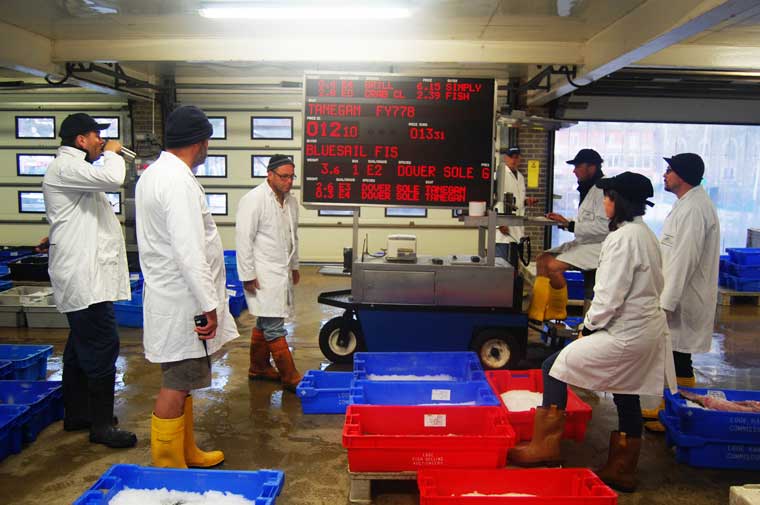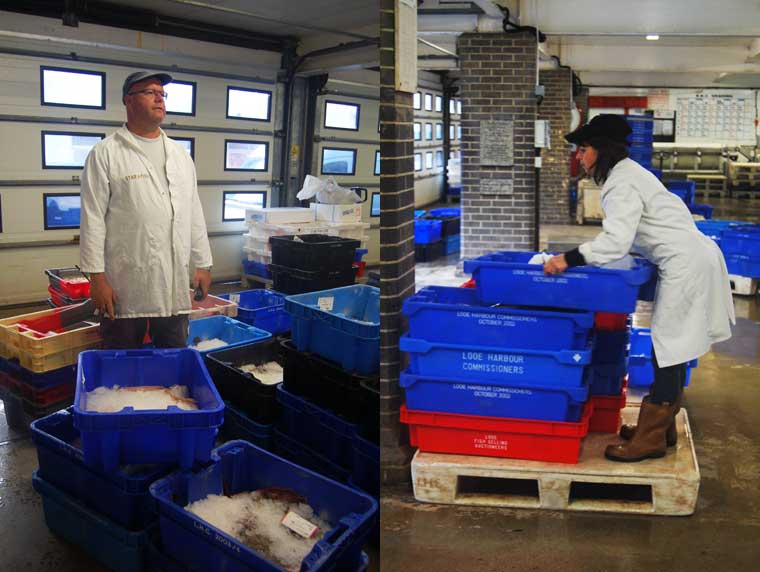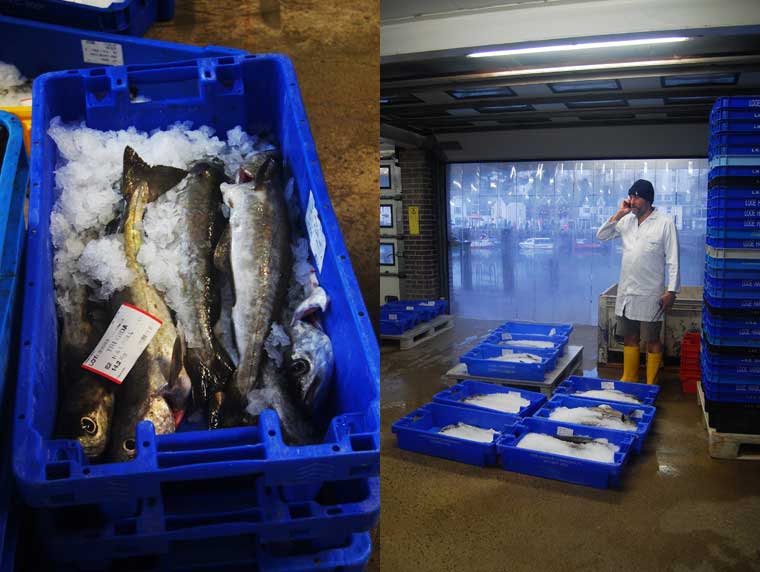Keeping it local
Set right by the harbour in this gorgeous Cornish fishing town, Looe Fish Market is holding its own in fast-changing times by focusing on the superb, ultra-fresh local day-boat catch.

Even in midsummer, it’s still chilly at 6.30 am down by the quayside when the Looe fish market begins. The buyers have already looked over the fish, neatly laid out in iced 20kg-22kg boxes, landed and graded the night before. Julian Clemens, the auctioneer who also helps to run the market – plus a wholesale fish business, a new fishmonger and a local restaurant with his business partner Dominic Sadler – has been here since 5am, checking that everything’s in order and setting the start prices, based on what’s been achieved at recent markets here and at Plymouth and Brixham. When he’s ready, he opens up a room at the back of the auction shed, and drives out the “Moby Clock”, a three-wheeled electric tricycle that carries a giant bidding screen around the stacks of fish boxes. It looks a bit bizarre, but it clearly works a treat.

Introduced as a novelty in the southwest 10 years ago, the system was first developed for Dutch flower and veg markets in the 1980s and spread to fish markets in the Netherlands, Brittany and elsewhere. It’s quick, quiet, discreet – and, crucially, fetches the best possible price for the boats. (See How the Moby Clock works.) It’s a quiet day when we visit: just 2 tonnes or so, compared with up to 20 tonnes in the winter, when there’s far more whitefish around. Even so it’s a showcase for the diversity of these waters. Every box seems to have a different fish: pollack, gurnard, Dover sole, lemon sole, megrim sole, brill, ling, mackerel, conger eel, John Dory and cuttlefish: later in the year, this will appear in spades, as much as 8 to 10 tonnes a day.
And the quality is fabulous – as good as it gets. It’s all marked “E”, an EU designation for “extra” quality day-boat fish. Looe has long been a niche market, naturally so, due to its tidal harbour, which can only take small boats. There are 45 or so here, all of which are signed up to Seafish’s Responsible Fishing Scheme. “The market helped to get all the boats through it,” says Julian. “We wanted to be the only port that had the whole fleet in the scheme.”

Most of the boats here are hand-liners, with a scattering of small trawlers, but the market also attracts boats from small neighbouring ports like Mevagissey, Polperro and beyond, with around 135 registered to trade here in all.
Looe has done well for its boats, says Julian, so much so that some local fishermen have traded up to bigger vessels that can’t get into the harbour and so have moved on to Plymouth. While volumes on the market have declined, fish prices have gone up to match, keeping turnover steady. “The quality of fish here sells itself. Looe will always have a market in some scale, because businesses are based on it. We deal with top end restaurants and buyers who want quality and will pay for it. We know we are consistently higher priced than other markets. But we also know that we can put seven days on our fish, because it’s so fresh. It’s better value if you don’t have to throw it away.” Fish bought at Looe is whisked off all over the UK, with much going across to the continent too. (See Who buy’s Looe’s fish?)
Julian has been in the fishing business for 10 years and was a chef for 22 years before that. He’s seen plenty of changes over the years. “There’s definitely more of a market now for value fish, as people are spending less. Now restaurants are using smaller or less well-known fish: not a big bit of turbot any more, but pollack, megrim sole, or smaller John Dory instead.
“It’s really opening people’s eyes. Even in fish and chip shops, we’re seeing plaice and megrim on the menu, or scallops, mussels and squid. They’re offering something different. And prices are moving up as a result. Take small ‘E4’ plaice, which is under 150g: it’s gone from 50p to 80p or 90p a kilo. Or gurnard, which used to be sold for lobster bait, and is now making £2 a kilo. We have to adapt, because people are. They’re not out buying fillet steak, they’re buying the next cut down. It’s the same with fish.” Julian’s seen changes too, with different species coming and going in abundance almost from year to year. “We’re definitely seeing more variety. We’re even seeing albacore tuna here now.”

Change is in the offing in the market too with talk of a new upgrade for the Auxis software that runs the Moby Clock, which could take it online for the first time. The internet and the economic climate has already made a big difference to the town. “It used to be all holiday homes here,” says Julian. “Now more people are coming down from London, and they’re actually living here. With the internet, people can live anywhere. And it’s a lovely quality of life down here.”





